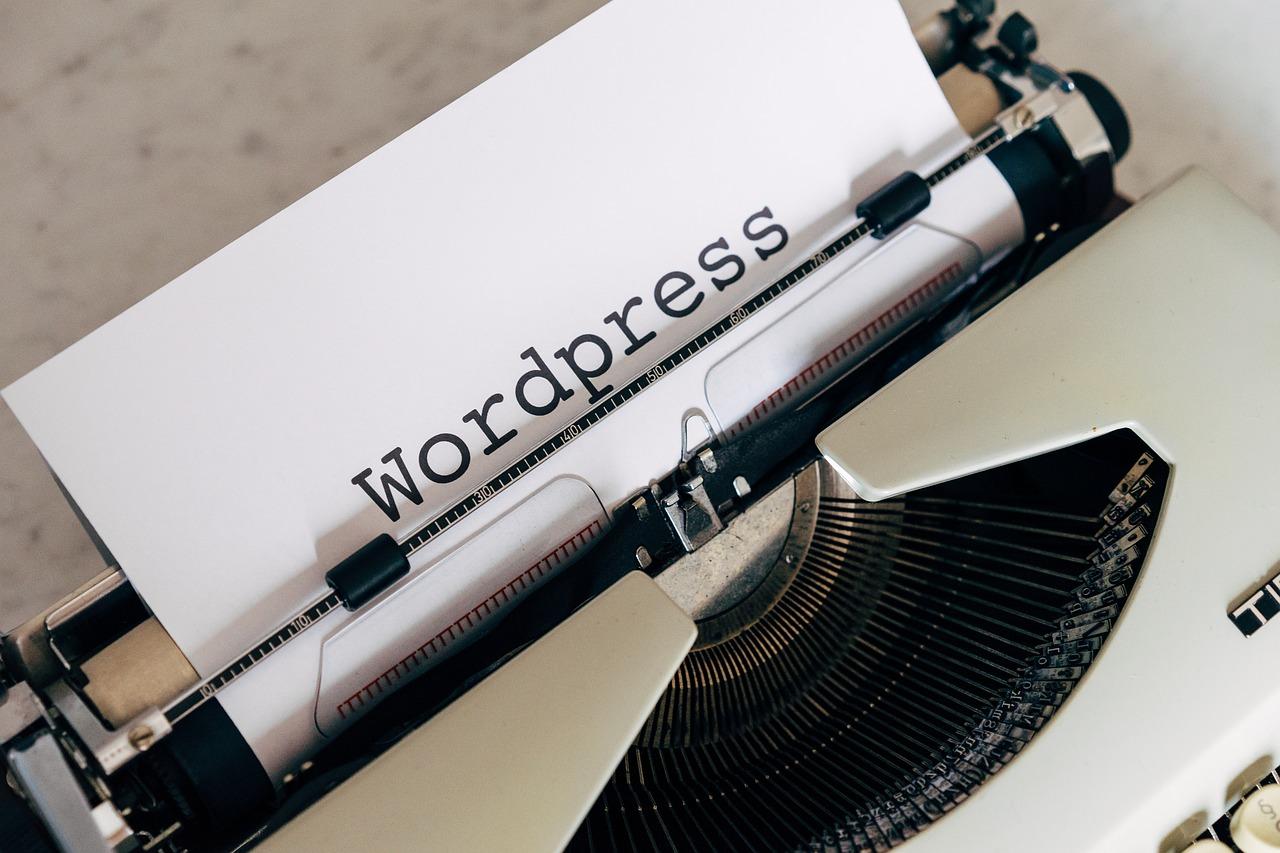Unlock the potential of your business by building a Shopify store that truly converts! Transform your vision into reality with compelling design, strategic marketing, and seamless user experiences. Turn visitors into loyal customers and watch your dreams soar!
Build a Shopify store that actually converts
Unlock Your E-Commerce Potential: Build a Shopify Store That Actually Converts
In the digital age, where online shopping has become second nature for consumers, the dream of running a successful e-commerce store can feel tantalizingly within reach. Yet, for many aspiring entrepreneurs, the journey from idea to a thriving Shopify store often stalls at the starting line. What if we told you that the key to unlocking your store’s full potential lies not just in the products you sell, but in how you present them to the world?
Imagine transforming your Shopify store into a powerful engine for conversions—where every visitor doesn’t just browse but becomes an enthusiastic buyer. By understanding the art and science of effective e-commerce design, compelling copy, and strategic marketing, you can create a shopping experience that resonates with your audience and drives sales like never before.
In this article, we will guide you through the essential strategies and innovative approaches to build a Shopify store that not only attracts traffic but also captivates and converts visitors into loyal customers. Let’s inspire your entrepreneurial journey and turn your vision into a reality—one click at a time!
Understanding Your Target Audience for Maximum Impact
To create a Shopify store that excels in conversion rates, you must first dive deep into the psyche of your target audience. Understanding who they are, what they value, and how they interact with products is crucial. Here’s how you can unlock the potential of your ideal customer:
- Demographics: Gather information about age, gender, income level, and location. This foundational data helps tailor your messaging and product offerings.
- Psycho-graphics: Explore the interests, values, and lifestyles of your audience. This insight allows you to create emotionally resonant marketing campaigns.
- Shopping Behavior: Analyze how your audience shops online. Are they bargain hunters, or do they prefer luxury items? Understanding their buying habits will aid in designing your store and choosing the right products.
Once you have a solid grasp of your audience, segment your market into distinct groups. This segmentation can be based on their preferences or behaviors, enabling personalized marketing strategies that speak directly to each group. For example:
| Audience Segment | Key Characteristics | Marketing Approach |
|---|---|---|
| Young Professionals | Tech-savvy, career-oriented, time-constrained | Highlight convenience and efficiency in products |
| Health Enthusiasts | Fitness-focused, value quality, eco-conscious | Promote health benefits and sustainability |
| Luxury Shoppers | Affluent, brand-loyal, quality-driven | Emphasize exclusivity and premium features |
Utilize tools such as surveys, social media polls, and analytics to gather real-time data about your audience’s preferences. This ongoing research allows you to adapt your strategies quickly and effectively, ensuring you remain relevant in a constantly evolving marketplace.
Moreover, engaging directly with your audience through interactive elements can significantly enhance your connection. Consider incorporating:
- Live Chat: Provides immediate assistance and guidance.
- Customer Feedback Forms: Solicits opinions and suggestions to improve your offerings.
- Social Media Engagement: Builds community and fosters a sense of belonging among your customers.
never underestimate the power of storytelling. Share narratives that resonate with your customers’ experiences and emotions. When your audience feels a connection to your brand, they are more likely to convert, champion your products, and return for repeat purchases. By truly understanding your target audience, you can create a Shopify store that not only attracts visitors but also converts them into loyal customers.
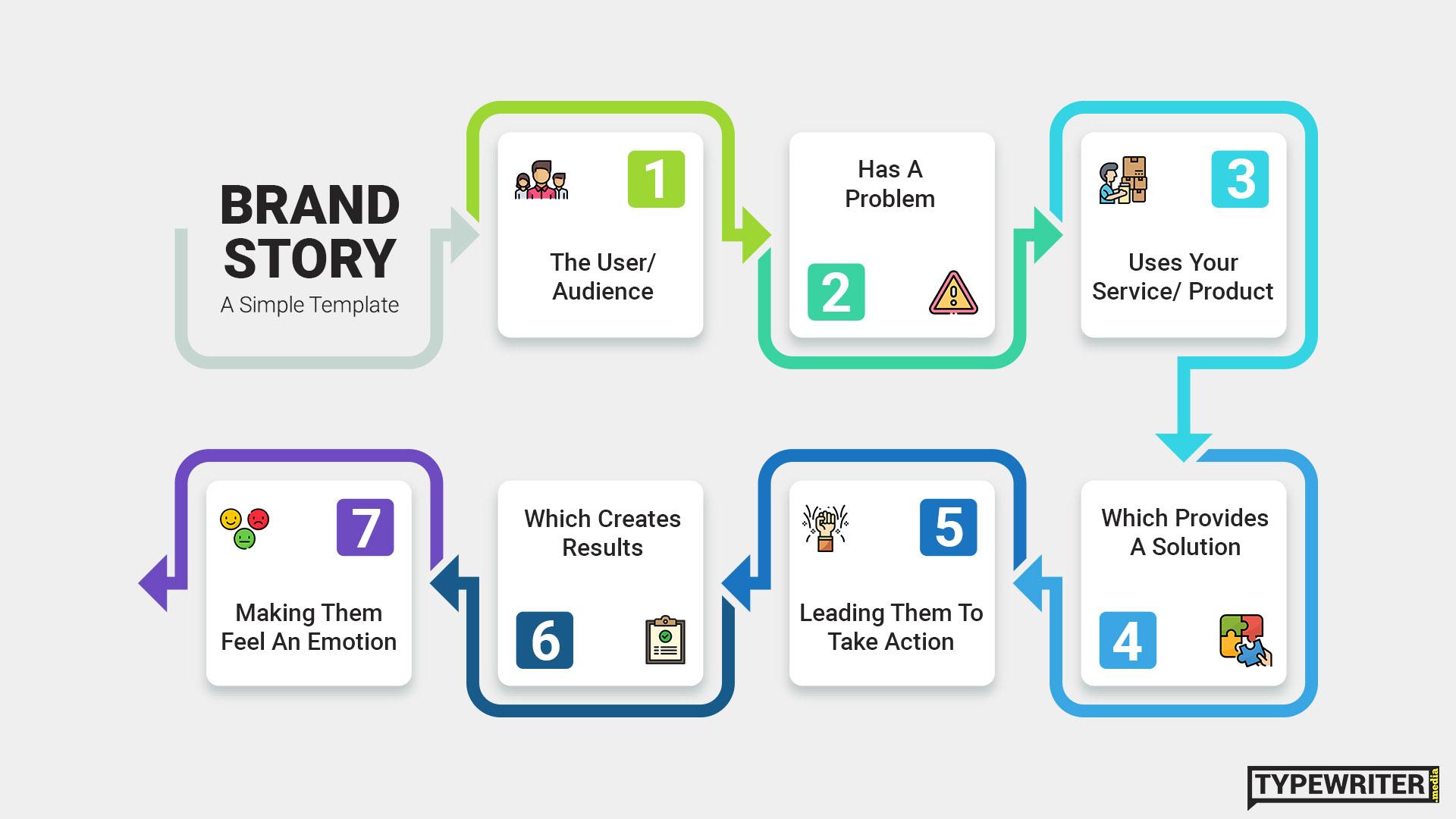
Crafting a Compelling Brand Story that Resonates
In a world saturated with products and options, a distinctive brand story is your lifeline. It’s not just about selling; it’s about connecting with your audience on a deeper level. When crafting your brand narrative, consider the following elements to ensure it resonates powerfully with potential customers:
- Your Origin: Share the inspiration behind your brand. What motivated you to start this journey? Authenticity breeds trust.
- Core Values: Highlight what your brand stands for. Are you committed to sustainability, community, or innovation? Let your values shine.
- Your Mission: Clearly articulate what you aim to achieve. How do you want to impact your customers’ lives or the environment?
- Customer Stories: Incorporate testimonials or experiences from real customers. This social proof can be a powerful motivator for potential buyers.
To weave these elements into a cohesive narrative, create a compelling arc. Consider this structure:
| Story Element | Description |
|---|---|
| Hook | Start with a captivating statement or question that grabs attention. |
| Challenge | Introduce a problem that resonates with your audience. |
| Journey | Describe the steps you took to address this issue. |
| Resolution | Show how your brand provides a solution and the positive impact it creates. |
Visual storytelling can also enhance your brand narrative. Use high-quality images, videos, and graphics that reflect your brand’s personality and mission. This not only captivates your audience but also reinforces your message. Remember, every visual element should align with your brand’s voice and values.
don’t forget to keep your audience at the center of your story. Engage with them through social media, email newsletters, and community events. The more you listen to their feedback and involve them in your narrative, the stronger the bond you’ll create. A brand story that resonates is one that evolves with its audience, fostering loyalty and trust.
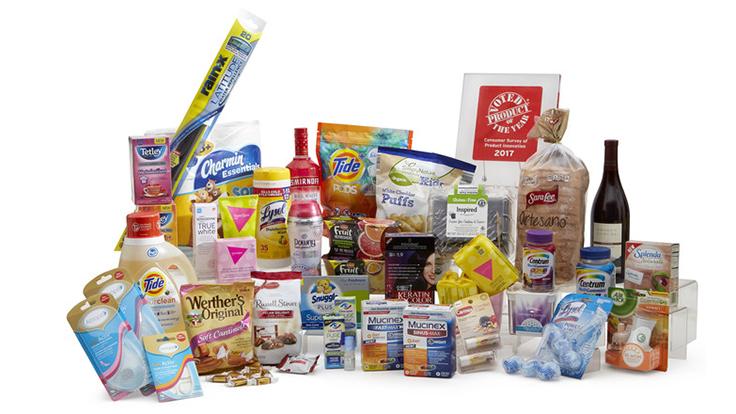
Choosing the Right Products to Capture Attention and Drive Sales
In the vast ocean of online retail, your product selection is your lifeboat. To ensure it stands out and attracts the right customers, it’s essential to choose products that not only captivate but also resonate with your audience. Consider the following strategies to elevate your product offering:
- Identify Trends: Stay ahead of the curve by monitoring market trends. Utilize tools like Google Trends or social media platforms to discover what’s currently hot in your niche.
- Know Your Audience: Conduct thorough market research to understand your target demographic. What are their pain points? What excites them? Tailoring your product selection to meet these needs can dramatically increase engagement.
- Quality Over Quantity: Instead of overwhelming customers with choices, focus on a curated selection of high-quality products that embody your brand’s ethos. This approach fosters trust and encourages repeat purchases.
Another critical aspect is the power of visuals in driving sales. High-quality images and detailed descriptions can significantly enhance perceived value. Ensure your product images are:
- High Resolution: Clear, sharp images that allow customers to zoom in and see details.
- Contextual: Show your products in use or within a lifestyle setting to help customers visualize their place in their lives.
- Consistent: Maintain a uniform style across all images to create a cohesive brand experience.
Pricing strategies can also make or break your conversion rates. Competitive pricing is crucial, but don’t shy away from value positioning. If you’re offering premium products, justify the price with exceptional features or unique selling points. Consider implementing the following pricing techniques:
| Pricing Strategy | Description |
|---|---|
| Psychological Pricing | Set prices just below whole numbers (e.g., $19.99 instead of $20). |
| Bundle Pricing | Offer discounts for bundled products to encourage larger purchases. |
| Dynamic Pricing | Adjust prices based on demand, competition, and customer behavior. |
Lastly, never underestimate the impact of customer feedback on product selection. Reviews and testimonials can provide invaluable insights into what your customers love and what could be improved. Encourage reviews, engage in dialogues, and adapt your offerings based on this feedback. Building a community around your brand fosters loyalty and can lead to organic growth through word-of-mouth referrals.
Designing an Engaging User Experience that Keeps Customers Coming Back
Creating a Shopify store that transforms casual visitors into loyal customers is an art that hinges on user experience (UX). A well-crafted UX not only draws users in but also nurtures their engagement with your brand. To achieve this, it’s essential to focus on the interplay of design, functionality, and emotional connection.
First and foremost, the aesthetic appeal of your store must resonate with your target audience. Colors, typography, and imagery should align with your brand identity and evoke the right emotions. Consider these key design elements:
- Consistent Branding: Maintain a cohesive look and feel throughout your site.
- Responsive Design: Ensure your store looks great on all devices, from desktops to mobiles.
- High-Quality Visuals: Invest in professional images and graphics that highlight your products effectively.
Beyond aesthetics, the functionality of your store plays a pivotal role in user satisfaction. A seamless navigation experience can significantly enhance the likelihood of conversion. Implement a clear and intuitive menu structure, making it easy for customers to find what they’re looking for with minimal effort. Below is a simple layout suggestion for your main navigation:
| Navigation Item | Purpose |
|---|---|
| Home | Entry point showcasing key products and promotions. |
| Shop by Category | Allows users to browse specific product types effortlessly. |
| About Us | Builds trust by sharing your story and mission. |
| Contact | Provides a direct line for inquiries, enhancing customer support. |
Another crucial aspect of user experience is the checkout process. A complicated or lengthy checkout can lead to cart abandonment, so streamline this vital step. Offer guest checkout options, minimize form fields, and provide multiple payment methods to cater to different customer preferences. A fast and secure checkout process instills confidence and encourages repeat purchases.
Lastly, foster a sense of community and connection with your customers. Incorporate elements like customer reviews, interactive features, and personalized recommendations. Engaging with your audience through social media and email marketing can also create lasting relationships that keep customers coming back. Remember, a satisfied customer is your best marketing asset.
Optimizing Your Shopify Store for Speed and Mobile Responsiveness
In today’s fast-paced digital landscape, a slow-loading Shopify store can be detrimental to your success. To keep potential customers engaged, it’s crucial to optimize your store for speed. Here are several strategies to enhance your site’s performance:
- Compress Images: Large images can drastically slow down your site. Use tools like TinyPNG or Shopify’s built-in image compression to reduce file sizes without sacrificing quality.
- Minimize Apps: While apps can add functionality, too many can bloat your site. Regularly review and remove any unnecessary apps to streamline performance.
- Leverage Browser Caching: By storing certain files in users’ browsers, you can significantly decrease loading times for repeat visitors.
- Use a Content Delivery Network (CDN): A CDN can distribute your content globally, allowing users to access your site from the nearest server for faster loading times.
Mobile responsiveness is equally essential. With more consumers shopping on their mobile devices than ever before, your store must be optimized for smaller screens. Follow these best practices to ensure a seamless mobile experience:
- Responsive Design: Choose a Shopify theme that automatically adapts to different screen sizes, providing a consistent experience across devices.
- Simplify Navigation: Use a mobile-friendly menu layout. Prioritize essential categories and keep your navigation as straightforward as possible.
- Touch-Friendly Buttons: Ensure that buttons are large enough for users to tap easily, reducing frustration and enhancing usability.
To illustrate the importance of site speed and mobile responsiveness, consider the following table that compares conversion rates based on load times:
| Load Time | Conversion Rate |
|---|---|
| 1 second | 2.5% |
| 3 seconds | 1.5% |
| 5 seconds | 0.5% |
As this data shows, even a slight increase in load time can lead to significant drops in conversion rates. Prioritizing speed and mobile responsiveness is not just a technical choice; it’s a strategic business decision that can propel your store’s success.

Leveraging High-Quality Visuals to Showcase Your Products
In the realm of e-commerce, first impressions matter immensely. High-quality visuals act as the gateway to your products, captivating potential customers and compelling them to explore further. Investing in stunning imagery is not just about aesthetics; it’s about building trust and conveying the value of what you offer.
Showcase Your Product Details: Clear and crisp images allow customers to appreciate the finer details of your products. Use close-ups to highlight textures, materials, and craftsmanship. Consider the following approaches:
- Multiple Angles: Provide a 360-degree view by showing the product from various perspectives.
- Contextual Images: Display your product in a real-life setting to help customers envision its use.
- Scale Reference: Include images with objects for size comparison, aiding buyers in making informed choices.
Utilize Lifestyle Photography: Incorporating lifestyle shots can significantly enhance your product’s appeal. These images tell a story and evoke emotions, enabling potential buyers to connect with your brand on a personal level. When customers see your products in action, it transcends mere functionality and cultivates a desire for ownership.
Consider creating a cohesive visual narrative that aligns with your brand identity. This includes:
- Consistent Style: Maintain a uniform aesthetic across all images to solidify brand recognition.
- Emotional Engagement: Capture moments that resonate with your target audience, making them feel part of a lifestyle.
- Color Palette: Use colors that reflect your brand’s voice and ethos, ensuring harmony in visuals.
Optimize for Mobile Viewing: With the rise of mobile shopping, ensure that your visuals are optimized for various screen sizes. Images should load quickly and display correctly, preserving their quality across devices. High-resolution images can be scaled down for mobile without losing impact, while strategically placed thumbnails can enhance user experience.
Leverage User-Generated Content: Another powerful tactic is to incorporate user-generated content (UGC). Encourage your customers to share their own photos featuring your products, as this adds authenticity and builds community. Showcase these images on your site, creating a sense of belonging and trust among potential buyers.
By mastering the art of high-quality visuals, you can transform your Shopify store into a vibrant marketplace that not only attracts visitors but also converts them into loyal customers. Remember, compelling imagery is an investment that pays dividends in engagement, trust, and, ultimately, sales.
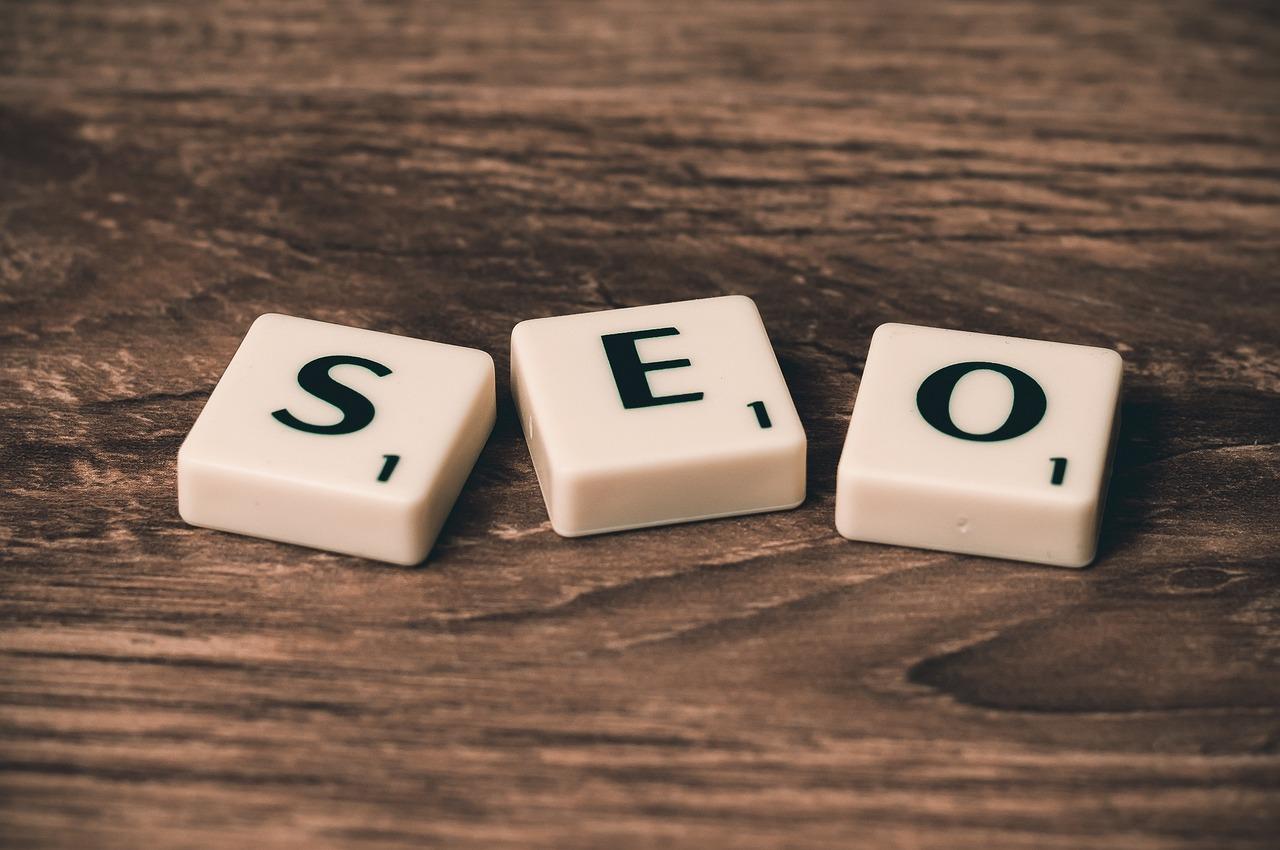
Implementing Effective SEO Strategies to Boost Visibility
To truly maximize the potential of your Shopify store, implementing effective SEO strategies is crucial. When potential customers search for products you offer, you want your store to be the first option they see. Here are several actionable strategies to elevate your store’s visibility:
- Keyword Research: Identify the terms and phrases your target audience is using. Tools like Google Keyword Planner and SEMrush can help uncover popular search queries. Focus on long-tail keywords that reflect buyer intent and have lower competition.
- On-Page SEO: Optimize product descriptions, titles, and meta tags with your targeted keywords. Ensure that each product page has a unique title and meta description that not only includes keywords but also engages the potential buyer.
- Mobile Optimization: With the increase in mobile shopping, ensure your Shopify store is fully responsive. A mobile-optimized site improves user experience and boosts your rankings on search engines.
- Quality Content Creation: Start a blog related to your niche. Regularly publishing informative articles can establish your store as an authority in your market and help attract organic traffic.
- Link Building: Develop relationships with influencers and bloggers in your industry to earn backlinks. High-quality inbound links can dramatically increase your store’s authority and search engine ranking.
Consider implementing these strategies in a structured manner. A dedicated SEO plan should include:
| Strategy | Goal | Frequency |
|---|---|---|
| Keyword Research | Identify target keywords | Quarterly |
| On-Page SEO Updates | Optimize product pages | Monthly |
| Content Creation | Attract organic traffic | Bi-weekly |
| Link Building Outreach | Increase authority | Ongoing |
Moreover, don’t underestimate the power of user-generated content. Encourage customers to leave reviews and share their experiences. This not only enhances trust but also enriches your site content, providing fresh material for search engines to index.
analyze your efforts regularly. Utilize tools like Google Analytics to track your store’s performance and refine your strategies based on data insights. By consistently optimizing your SEO efforts, you’ll create a Shopify store that not only attracts traffic but also converts visitors into loyal customers.
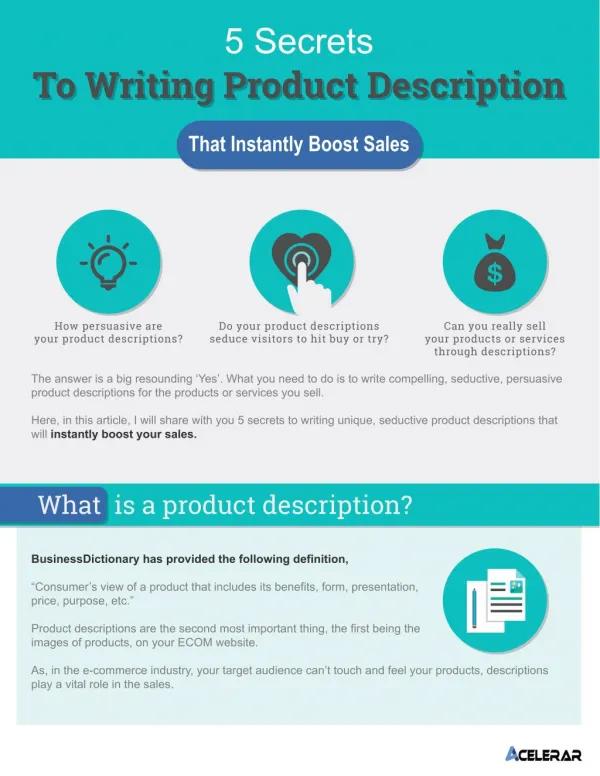
Creating Persuasive Product Descriptions that Convert Browsers into Buyers
In the world of e-commerce, the right words can make all the difference. Product descriptions are more than just a list of features; they are your chance to tell a story that resonates with potential buyers. By tapping into the emotions and desires of your audience, you can transform a simple browser into an enthusiastic buyer.
Understand Your Audience
Before you start writing, take a moment to understand who you are speaking to. What are their pain points? What solutions are they seeking? When your descriptions speak directly to the needs and wants of your target audience, they become far more compelling. Consider crafting customer personas to guide your writing process.
Highlight Benefits Over Features
While features are important, it’s the benefits that truly sell a product. Instead of simply stating that a coffee maker has a 12-cup capacity, illustrate how it can save time in the morning rush or provide the perfect brew for family gatherings. Make it relatable:
- Save time: Brew your morning coffee with just one touch.
- Enhance experience: Enjoy barista-quality coffee at home.
- Impress guests: Serve fresh coffee for gatherings effortlessly.
Create a Sense of Urgency
Encourage immediate action by creating a sense of urgency in your descriptions. Phrases like “limited time offer” or “only a few items left in stock” can motivate customers to act quickly. Pair this with enticing visuals and a clear call-to-action to maximize impact.
Use Engaging Language
Descriptive and vivid language can transport your potential customers into a world where they can imagine using your product. Utilize sensory details that appeal to sight, sound, taste, touch, and smell, making your product irresistible. For example:
“Imagine waking up to the rich aroma of freshly brewed coffee, filling your home with warmth and comfort.”
| Descriptive Element | Example |
|---|---|
| Adjectives | Luxurious, vibrant, eco-friendly |
| Action Verbs | Embrace, indulge, transform |
| Emotional Triggers | Comfort, joy, satisfaction |
don’t forget to incorporate visuals that complement your descriptions. High-quality images or videos can enhance the storytelling experience, making your product not just an item for sale, but a desirable lifestyle choice. When combined with persuasive wording, they create a powerful sales tool that captivates your audience and drives conversions.
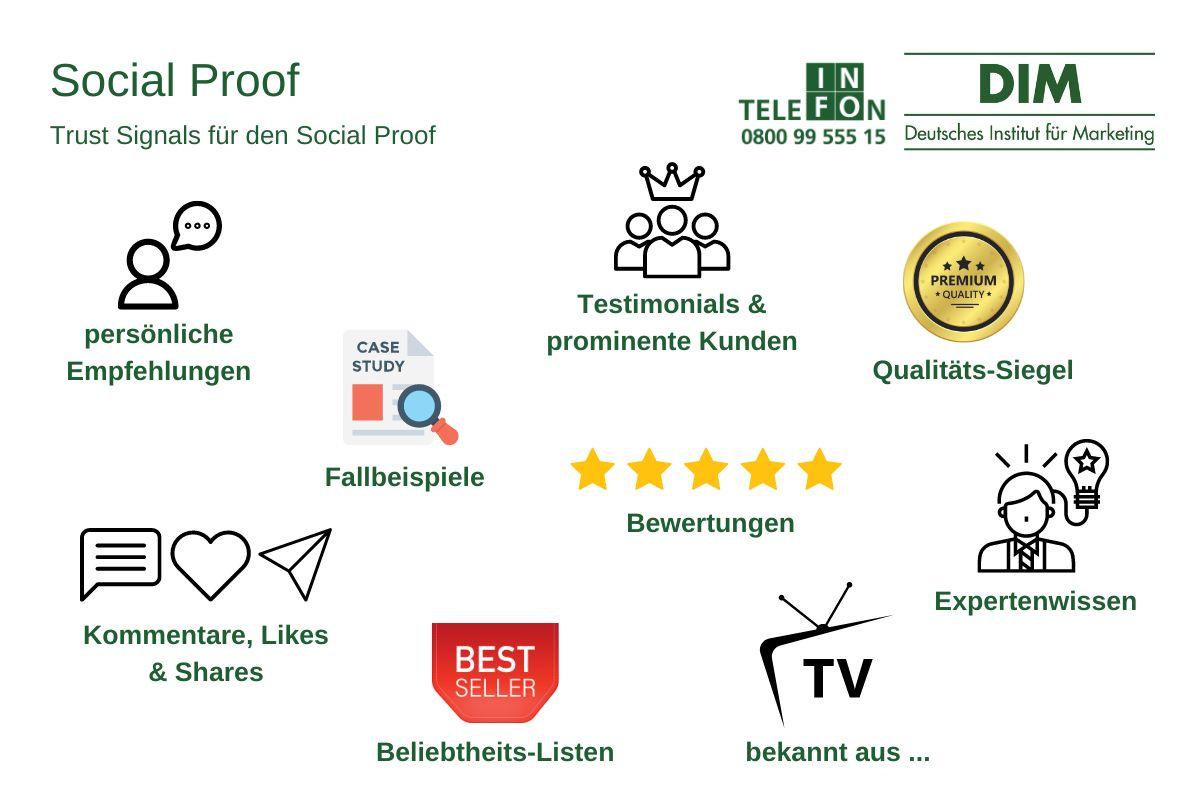
Utilizing Social Proof and Customer Reviews to Build Trust
In today’s digital marketplace, trust is currency. When potential customers visit your Shopify store, they are not just looking for products; they are seeking assurance that their purchase is worthwhile. This is where social proof and customer reviews come into play, acting as powerful tools to convert casual browsers into loyal buyers.
Imagine a potential customer landing on your site, met with a myriad of choices. What can set you apart? Here are some strategies to effectively utilize social proof:
- Showcase Customer Reviews: Displaying genuine testimonials prominently on your product pages can significantly influence purchasing decisions. Consider implementing a star rating system for easy visibility.
- Highlight User-Generated Content: Encourage customers to share photos of your products in use. This not only builds community but also provides tangible evidence of your product’s quality.
- Feature Social Media Mentions: If your brand garners attention on platforms like Instagram or Twitter, highlight these mentions. A simple feed of tagged photos can enhance credibility.
Additionally, understanding the psychology behind customer reviews is crucial. Studies show that consumers are more likely to trust peer recommendations over traditional advertising. Consider creating a table to illustrate how different types of reviews can impact buyer behavior:
| Type of Review | Impact on Purchase Decision |
|---|---|
| 5-Star Ratings | 85% of buyers trust them |
| Detailed Written Reviews | 70% consider them essential |
| Photos from Customers | 65% boost confidence |
It’s also vital to respond to reviews, whether positive or negative. Acknowledging feedback shows potential customers that you care about their experience. This interaction can turn a simple review into a dialogue, enhancing customer relationships and fostering loyalty.
Lastly, consider adding a section for real-time purchase notifications on your store. Letting visitors know that others are buying products can create a sense of urgency and community. A simple notification like ”Jane from New York just purchased a Premium Coffee Maker!” can have a profound effect on converting those who are on the fence.
By weaving these elements into your Shopify store, you not only enhance trust but also create a shopping experience that feels personal and engaging. Remember, every review is a stepping stone toward building a reputable brand that customers can rely on.
Integrating Seamless Payment Options for Hassle-Free Checkout
In the competitive landscape of e-commerce, offering a range of payment options is not just a convenience; it’s a necessity. Customers today expect flexibility and security when completing their transactions. By integrating multiple payment gateways, you cater to a diverse clientele, enhancing their shopping experience and boosting your conversion rates.
Consider implementing the following payment options:
- Credit and Debit Cards: This is the most common method of payment. Ensure you support major card networks like Visa, MasterCard, and American Express.
- Digital Wallets: Services such as PayPal, Apple Pay, and Google Pay offer quick, secure transactions that customers love.
- Buy Now, Pay Later: Options like Afterpay or Klarna allow customers to split their purchases into manageable payments, making higher-priced items more accessible.
- Cryptocurrency: As digital currencies gain popularity, offering options like Bitcoin can attract tech-savvy shoppers.
It’s vital to not only provide these options but also to ensure a smooth and intuitive checkout process. A complicated checkout can lead to cart abandonment, costing you sales. Here are some tips to streamline your checkout:
- Guest Checkout: Allow customers to make purchases without creating an account. This reduces friction and expedites the transaction.
- Auto-Fill Features: Incorporate auto-fill for shipping and billing details to save users time.
- Order Summary: Always display an order summary before finalizing the purchase. This transparency builds trust.
To further enhance the payment experience, consider displaying trust badges and security certifications at checkout. This reassurance can significantly reduce anxiety about online transactions. Customers want to feel safe, and visibly showcasing your security measures can make a world of difference.
| Payment Method | Advantages | Considerations |
|---|---|---|
| Credit/Debit Cards | Widely accepted, instant processing | Transaction fees may apply |
| Digital Wallets | Fast checkout, user-friendly | Some wallets may have limited availability |
| Buy Now, Pay Later | Increases sales, flexible payments | Interest rates can apply if not paid on time |
| Cryptocurrency | Appeals to tech-savvy users, low transaction fees | Volatility in value, acceptance varies |
By thoughtfully integrating these payment options and optimizing your checkout process, you not only enhance user satisfaction but also drive higher conversion rates. Don’t underestimate the power of a seamless payment experience; it can be the difference between a lost sale and a loyal customer.
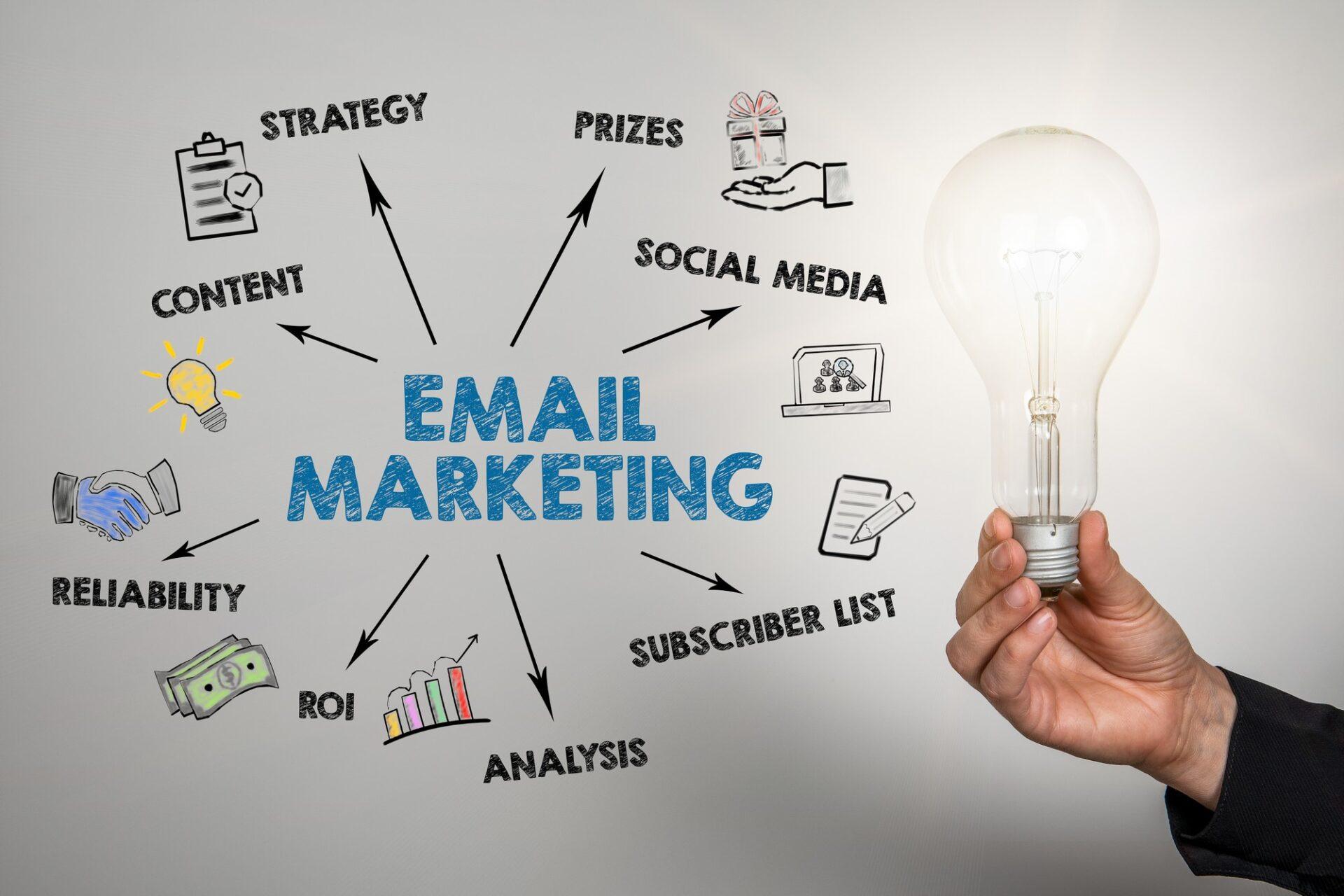
Harnessing the Power of Email Marketing to Drive Retention
Email marketing is an underutilized powerhouse for nurturing relationships with your customers and driving retention, especially in the competitive realm of e-commerce. By leveraging personalized communication, you can turn one-time buyers into loyal brand advocates. Here are several strategies to harness its potential:
- Segmentation: Divide your audience into targeted groups based on their purchase history, preferences, or engagement levels. This allows you to tailor your messages, ensuring that each customer receives content that resonates with their interests.
- Personalization: Go beyond simply addressing customers by their first names. Use data to customize recommendations and offers, making your emails feel like a conversation rather than a sales pitch.
- Automated Campaigns: Set up automated emails for key customer interactions, such as welcome messages, cart abandonment reminders, and follow-ups after purchase. This ensures timely communication that keeps your brand top-of-mind.
- Exclusive Offers: Create a sense of urgency and importance by offering special discounts or early access to new products exclusively through email. This not only incentivizes purchases but also enhances the perceived value of being on your mailing list.
- Feedback Loops: Encourage customers to share their experiences by asking for feedback after purchase. Use this information to improve your offerings while also showing customers that their opinions matter.
Measuring the success of your email marketing is crucial. Track metrics such as open rates, click-through rates, and conversion rates to determine what strategies work best for your audience. Consider creating a simple table to visualize the impact of your campaigns:
| Email Campaign | Open Rate (%) | Click-Through Rate (%) | Conversion Rate (%) |
|---|---|---|---|
| Welcome Series | 40% | 20% | 5% |
| Cart Abandonment | 35% | 25% | 10% |
| Post-Purchase Follow-Up | 30% | 15% | 8% |
Consistency is key; regularly engaging with your audience helps to build trust and anticipation. Develop a content calendar to ensure you maintain a steady flow of communication without overwhelming your subscribers. In addition to promotional content, consider incorporating informative newsletters or updates about your store to keep your customers engaged and informed.
always prioritize mobile optimization. With a significant number of users accessing their emails via smartphones, ensure your email designs are responsive and visually appealing. A seamless experience can drastically improve retention and foster brand loyalty.
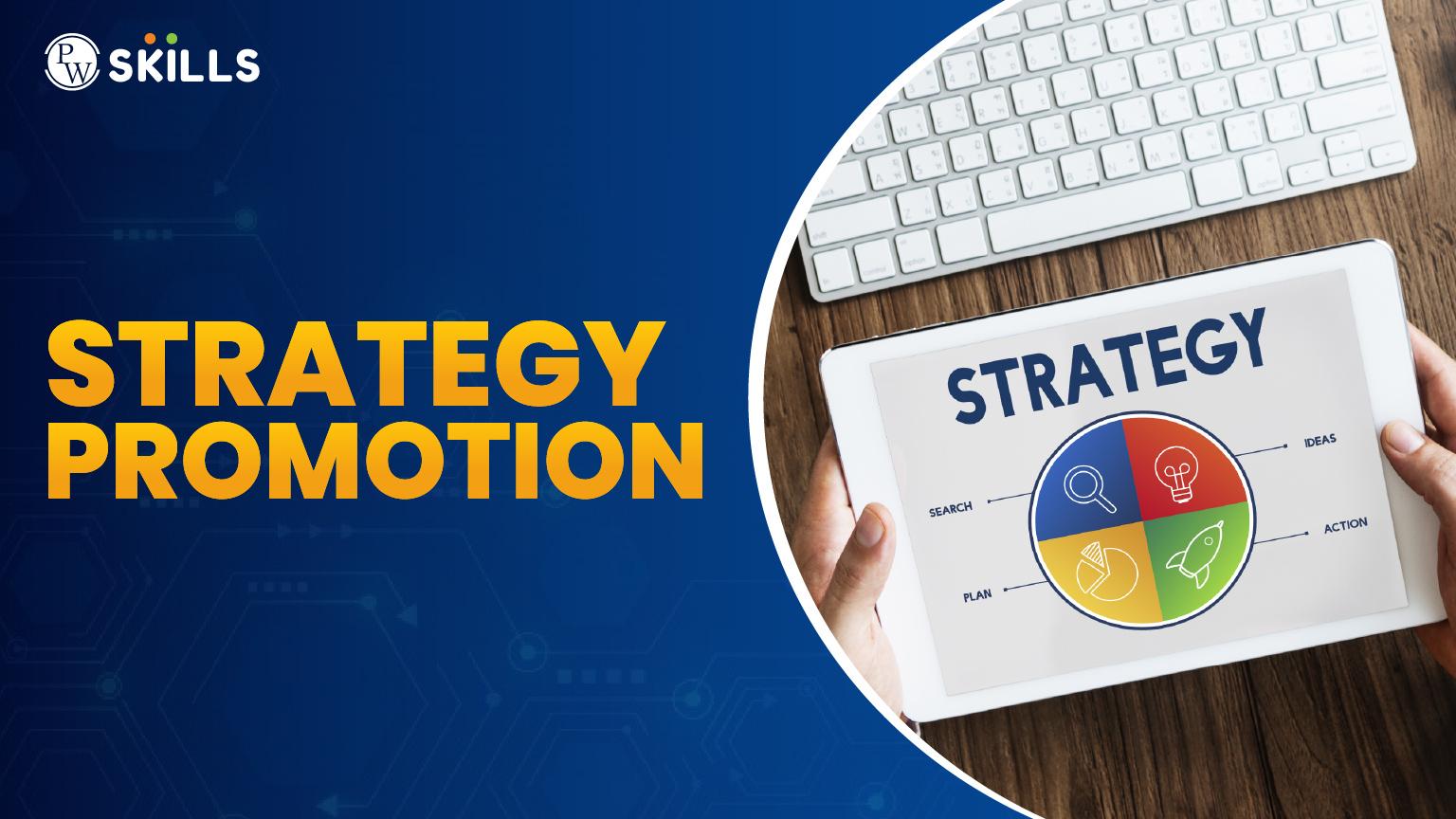
Executing Strategic Promotions to Encourage Urgency and Increase Sales
In the dynamic world of e-commerce, creating a sense of urgency can be a game-changer for boosting sales. By implementing strategic promotions, you can effectively motivate customers to make a purchase now rather than later. Here are some powerful tactics to consider:
- Limited-Time Offers: Craft exclusive deals that are available for a short duration. A countdown timer on your product pages can visually remind customers that time is running out.
- Flash Sales: Surprise your audience with unexpected discounts that last for just a few hours. This not only stimulates urgency but also keeps your brand top of mind.
- Scarcity Messaging: Highlight limited stock on your product pages. Phrases like “Only 3 left in stock!” can nudge indecisive customers to finalize their purchases.
- Seasonal Promotions: Tie your sales to holidays or seasonal events, creating a natural urgency as customers look for timely gifts or seasonal products.
Another effective method is utilizing reward systems that incentivize immediate action. Implementing a loyalty program where customers earn more points during promotional periods can encourage them to buy sooner to maximize their rewards. Additionally, consider offering bonuses for first-time buyers who complete a purchase within a specific timeframe, enhancing the urgency to not miss out.
Visual appeal is also critical in executing successful promotions. Use eye-catching banners and graphics that highlight your time-sensitive offers. Ensure that these elements are prominently displayed on your homepage, product pages, and social media channels. A well-designed promotion can capture attention and drive traffic to your site, leading to increased conversions.
| Promotion Type | Benefits | Recommended Duration |
|---|---|---|
| Limited-Time Offers | Creates urgency, boosts immediate sales | 24 – 72 hours |
| Flash Sales | Encourages impulse buying | 1 – 3 hours |
| Seasonal Promotions | Aligns with customer needs | 1 - 2 weeks |
don’t underestimate the power of social proof. Display customer reviews and testimonials alongside promotional content to reinforce the value of your products. When prospective buyers see that others are excited about your offerings, they are more likely to jump on board quickly.
By strategically executing promotions that foster a sense of urgency, you can effectively drive sales and create a thriving Shopify store that stands out in the competitive e-commerce landscape.

Analyzing Store Performance to Continuously Improve Conversion Rates
Understanding the nuances of your store’s performance is essential for driving sales and improving conversion rates. By diving deep into analytics, you can uncover trends and behaviors that inform strategic decisions. Key metrics to analyze include:
- Traffic Sources: Identify where your visitors are coming from—organic search, paid ads, social media, or referrals.
- Bounce Rates: Assess how many visitors leave immediately and explore potential reasons behind this behavior.
- Average Order Value (AOV): Determine how much customers are spending per order and strategize on upselling or cross-selling.
- Conversion Rates: Track the percentage of visitors who make a purchase, helping you understand the effectiveness of your sales funnel.
To effectively monitor these metrics, consider utilizing tools like Google Analytics and Shopify’s built-in reports. Establishing a routine for analysis allows you to spot patterns and identify opportunities for improvement. For instance, a high bounce rate from a particular traffic source may indicate that your marketing message is not aligning with visitor expectations.
Additionally, A/B testing can be a powerful method for refining your store’s design and user experience. By comparing two versions of a webpage, you can see which elements resonate more with your audience. Focus on testing:
- Product Page Layouts: Experiment with different arrangements of images, descriptions, and call-to-action buttons.
- Checkout Processes: Simplifying the checkout flow can reduce cart abandonment rates.
- Content and Messaging: Vary your headlines and promotional banners to find the most compelling copy.
Another critical aspect of performance analysis is understanding customer feedback. Surveys and reviews can provide insights that raw data can’t. Consider implementing feedback mechanisms such as:
- Post-Purchase Surveys: Ask customers about their shopping experience to gather actionable insights.
- Live Chat Support: Engage with visitors in real-time to address their concerns and improve service.
leveraging heatmaps and session recordings can give you a visual understanding of user behavior on your site. These tools allow you to see where visitors are clicking, scrolling, and spending the most time. This data can guide you in optimizing your layout and ensuring that essential elements are prominent and accessible.
| Metric | Goal | Action Plan |
|---|---|---|
| Traffic Sources | Increase organic visits by 20% | Invest in SEO and content marketing |
| Bounce Rate | Reduce to below 40% | Enhance landing page relevance |
| Average Order Value | Raise to $75 | Implement bundling strategies |
| Conversion Rate | Achieve 3% or higher | Optimize user experience |
By consistently analyzing these elements, you can create a cycle of continuous improvement that not only enhances the shopping experience but also drives higher conversion rates. Use these insights to build a Shopify store that resonates with your audience and encourages them to take action.

Embracing Customer Feedback for Ongoing Enhancement and Growth
In the dynamic world of e-commerce, the voice of the customer is a powerful tool that can steer your Shopify store toward unparalleled success. By actively seeking and integrating customer feedback, you can enhance the shopping experience, refine your offerings, and foster loyalty. Here’s how you can embrace this valuable resource:
- Solicit Feedback Regularly: Create opportunities for customers to share their experiences through surveys, reviews, or direct communication. Consider using pop-ups or follow-up emails after purchases to encourage responses.
- Analyze Customer Insights: Dive deep into the feedback collected to identify patterns and areas for improvement. Use analytics tools to track customer interactions and gauge satisfaction levels effectively.
- Implement Changes Promptly: Show your customers that their opinions matter. When you make changes based on their feedback, be sure to communicate this to them, reinforcing a sense of community and partnership.
Engaging with your audience doesn’t stop at gathering feedback; it’s about building a relationship. Share updates on improvements made from their suggestions through newsletters or social media. This not only enhances transparency but also encourages further dialogue. Customers are more likely to return when they feel their voices are heard and valued.
Consider creating a dedicated section on your Shopify store for showcasing customer testimonials and feedback. This can enhance trust and credibility while serving as a real-time showcase of your commitment to excellence. A simple table can be an effective way to display this feedback:
| Customer Name | Feedback |
|---|---|
| Jane D. | “The shopping experience was seamless, and I found exactly what I needed!” |
| Mike S. | “Great customer service! The team resolved my issue quickly.” |
| Sarah L. | “I love the new layout of the store. It’s so easy to navigate!” |
Ultimately, cultivating a feedback-rich environment requires dedication and strategy, but the rewards are immense. By positioning yourself as a customer-centric brand, you not only enhance the user experience but also pave the way for sustained growth and innovation. Your Shopify store can transform into a vibrant community hub, where customers are not just buyers but partners in your journey toward excellence.
Frequently Asked Questions (FAQ)
Q&A: Build a Shopify Store That Actually Converts
Q: Why should I choose Shopify for my online store?
A: Shopify is a powerful e-commerce platform that empowers entrepreneurs to bring their visions to life. With its user-friendly interface, customizable templates, and robust features, you can create a stunning online store that reflects your brand identity. It’s designed for both beginners and experts, making it the perfect choice for anyone ready to turn their dreams into reality.
Q: What are the essential elements of a high-converting Shopify store?
A: A high-converting Shopify store combines beautiful design with strategic functionality. Key elements include:
- Compelling Product Descriptions: Engage customers with clear, enticing descriptions that highlight benefits, not just features.
- High-Quality Images: Clear, high-resolution images and videos can showcase your products in their best light.
- User-Friendly Navigation: Simplify the shopping experience with clear categories and intuitive layout.
- Strong Calls to Action: Encourage visitors to take the next step, whether that’s adding to the cart or signing up for your newsletter.
- Customer Reviews and Testimonials: Build trust and social proof by showcasing positive feedback from satisfied customers.
Q: How can I optimize my store for mobile users?
A: With over half of online shopping now happening on mobile devices, optimizing your store is crucial. Choose a responsive theme, ensure fast loading times, and simplify your checkout process for mobile users. Test your site on various devices to ensure a seamless experience, making it easy for customers to shop from anywhere, at any time.
Q: What role does SEO play in my Shopify store’s success?
A: SEO (Search Engine Optimization) is vital for driving organic traffic to your store. By optimizing your product titles, descriptions, and images for relevant keywords, you can improve your visibility on search engines. Consider creating valuable content, such as blog posts related to your products, to attract and engage potential customers while enhancing your brand authority.
Q: How important is customer service to my store’s conversion rate?
A: Exceptional customer service can set you apart from competitors and boost your conversion rate significantly. Offer multiple channels for support, such as chat, email, and phone. Respond promptly and effectively to inquiries and complaints. Happy customers are more likely to make a purchase and share their positive experiences with others, turning them into brand advocates.
Q: What strategies can I use to drive traffic to my Shopify store?
A: There are countless strategies to attract visitors to your store:
- Social Media Marketing: Leverage platforms like Instagram and Facebook to showcase your products and engage with potential customers.
- Email Marketing: Build a list of subscribers and send them regular updates, promotions, and personalized offers.
- Influencer Partnerships: Collaborate with influencers in your niche to reach new audiences and gain credibility.
- Paid Advertising: Use targeted ads on platforms like Google and Facebook to drive traffic to your store.
Q: How can I continuously improve my store after launch?
A: The journey doesn’t end at launch. Use analytics tools to monitor your store’s performance, track customer behavior, and identify areas for improvement. Solicit feedback from customers and be willing to adapt based on their suggestions. Consider regular A/B testing to optimize various elements of your site, from product pages to checkout processes, ensuring your store evolves alongside market trends.
Q: What’s the most important takeaway for someone looking to build a high-converting Shopify store?
A: The most important lesson is that creating a successful Shopify store requires a blend of passion, strategy, and adaptability. Focus on delivering value to your customers, stay committed to improving your store, and believe in your vision. With the right mindset and tools, you can build a store that not only converts but also creates a meaningful connection with your audience. Go ahead, take the leap, and turn your entrepreneurial dreams into reality!
Final Thoughts
As we wrap up our journey through the essential elements of building a Shopify store that truly converts, remember that this is just the beginning. You now hold the blueprint to transform your vision into a thriving online business. Each step you take—from curating an engaging product selection to optimizing your site for user experience—is a building block toward achieving not just sales, but brand loyalty and long-term success.
Embrace the challenge, stay persistent, and continually refine your approach. Every setback can be a stepping stone toward greater growth. Connect with your audience, tell your story, and make sure your passion shines through every element of your store. The digital marketplace is vast and filled with opportunity; your unique perspective is what will set you apart.
Now is the time to take action. As you embark on this exciting venture, remember: a successful Shopify store doesn’t just happen; it’s built with intention, creativity, and a relentless commitment to serving your customers. So go forth and implement the strategies we’ve discussed. Your dream of a high-converting Shopify store is within reach. Believe in yourself, and watch your entrepreneurial vision come to life!



